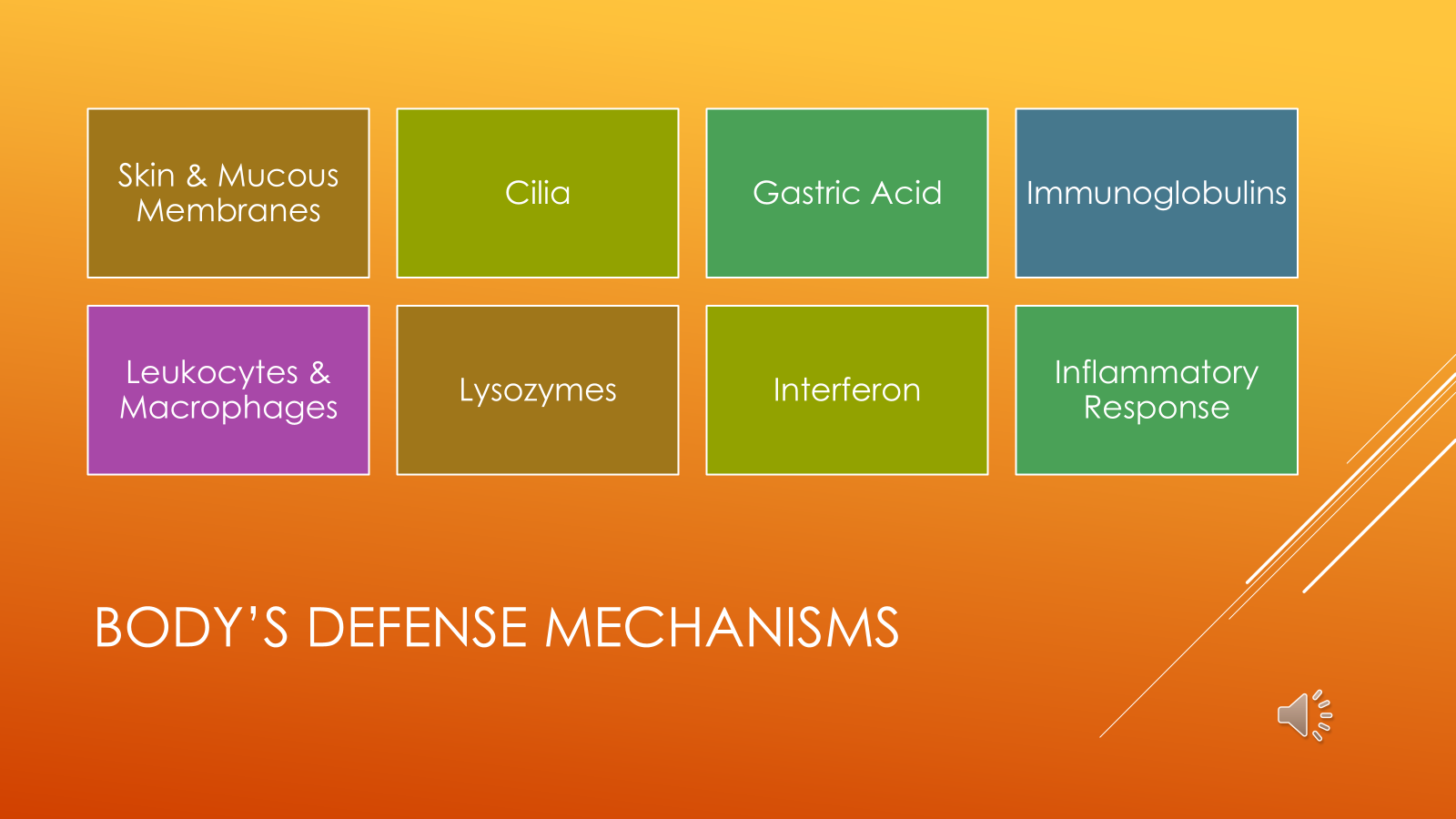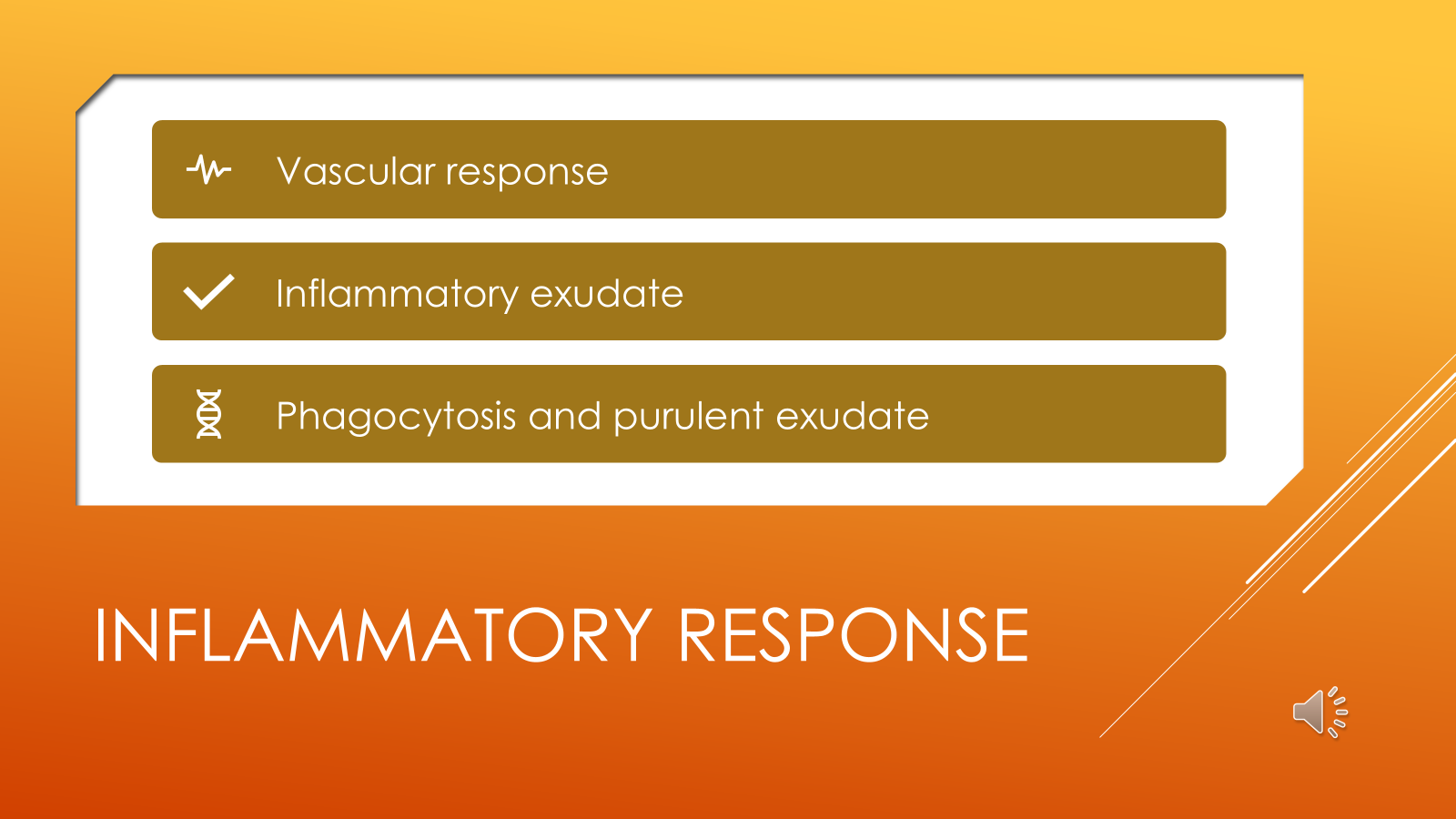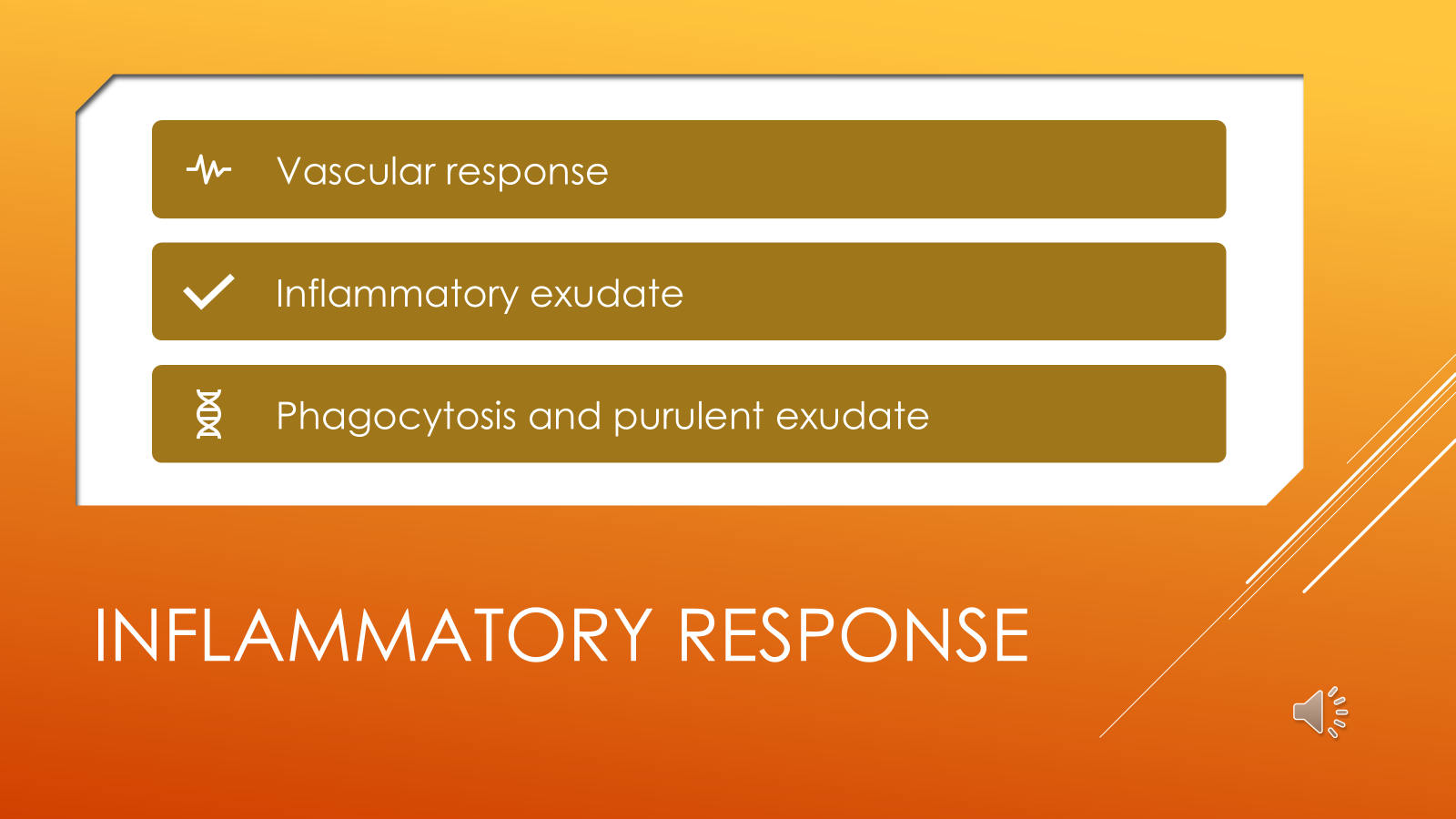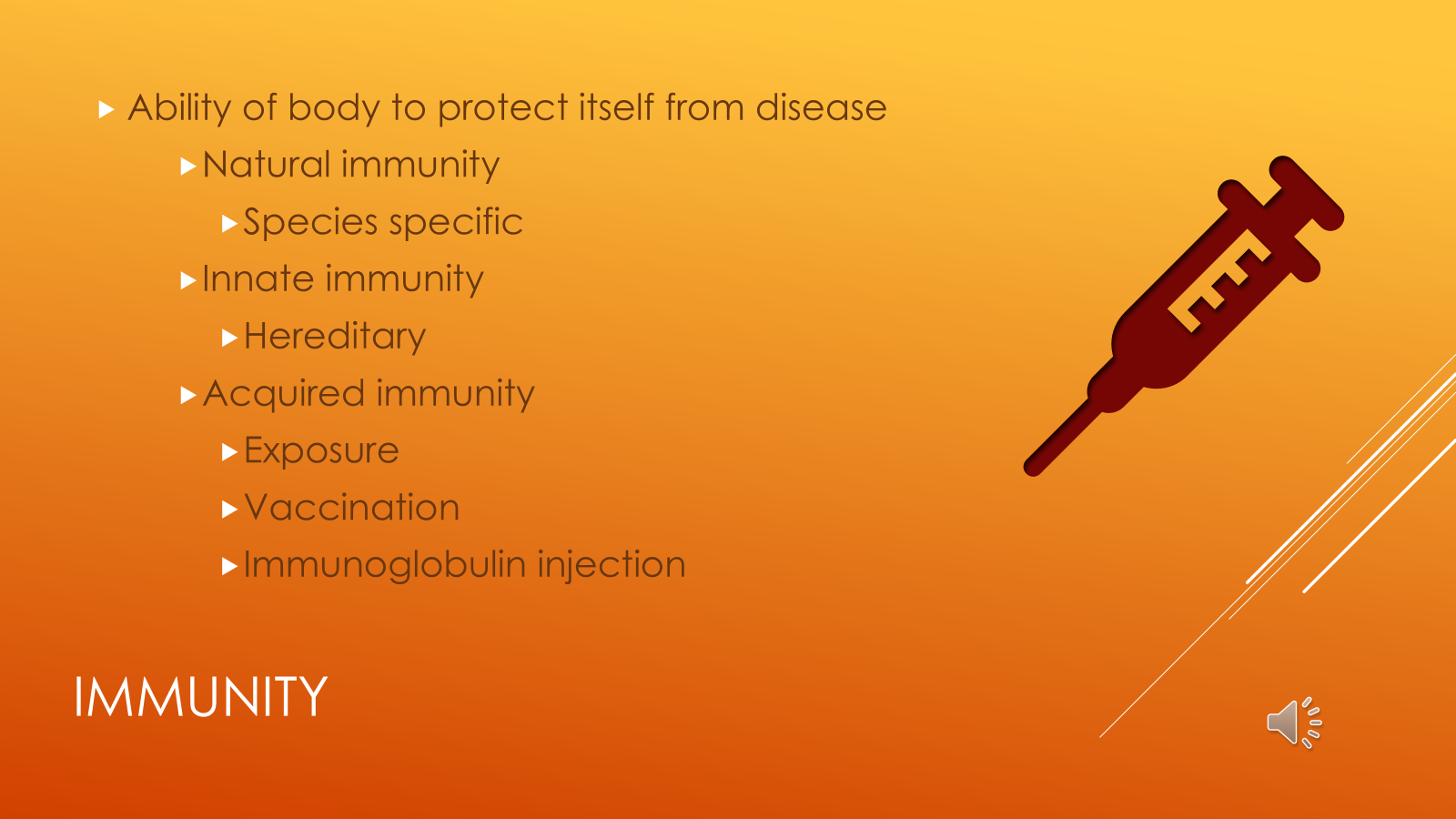infection
1/50
There's no tags or description
Looks like no tags are added yet.
Name | Mastery | Learn | Test | Matching | Spaced |
|---|
No study sessions yet.
51 Terms

Primary Defenses
Physical and chemical barriers that protect the body from pathogens.
Skin
Acts as a barrier against pathogens.
Mucous Membranes
Trap pathogens in the respiratory, gastrointestinal, and genitourinary tracts.
Acidic pH
Prevents bacterial growth on skin and within the stomach.
Cilia
Tiny hairs in the respiratory tract that push out inhaled particles.
Immunoglobulins
Also known as antibodies; produced by B lymphocytes to neutralize pathogens.
Neutrophils
First responders to infection.
Lymphocytes
Include B and T cells that produce antibodies.
White Blood Cells (WBCs)
Cells that fight against infection.
Monocytes
Become macrophages and engulf pathogens.
Eosinophils
Fight parasites and are involved in allergic reactions.
Basophils
Release histamine during allergic responses.
Macrophages
Phagocytes that engulf and digest pathogens.
Phagocytosis
Process by which macrophages ingest pathogens.
Inflammatory Response three
The body's reaction to injury, infection, or trauma.

three stages of inflammatory response

Vascular Response
Involves vasodilation, leading to increased blood flow and redness.
Inflammatory Exudate
Plasma that leaks into tissues causing swelling and pain.
Phagocytosis & Purulent Exudate
WBCs engulf pathogens; possible pus formation.

Natural Immunity
Species-specific and inherited protection from pathogens.
Active Immunity
Develops from infection or vaccination.
Passive Immunity
Immunity passed from mother to baby or through immunoglobulin injections.
Risk Factors for Infection
Conditions that make individuals more susceptible to infections.
Elderly (weakened immune response).
Immunocompromised individuals (HIV, cancer, chronic illness).
Chronic diseases (diabetes, COPD).
Dysphagia (trouble swallowing → aspiration pneumonia risk).
Hospital & long-term care settings (higher exposure to pathogens).
Medical devices (catheters, IVs, feeding tubes, ventilators).
Localized Infection
Infection affecting one area of the body.
Symptoms: Pain, redness, swelling, warmth.
Systemic Infection
Infection that spreads throughout the body via the bloodstream.
Symptoms: Fever, fatigue, increased WBC count, chills, body aches.
Gram Stain
Lab test that identifies bacteria based on cell wall characteristics.
Gram-positive → Stains purple.
Gram-negative → Stains pink.
Culture & Sensitivity (C&S)
Test to identify bacteria and determine antibiotic effectiveness.
Serum Antibody Test
Detects past exposure to antigens.(does not confirm current infection).
CBC with Differential
Measures types of WBCs to assess infection.
ESR (Erythrocyte Sedimentation Rate)
Screens for inflammation.
Other Tests:
TB skin test, MRI, CT scan, X-ray
Medical Asepsis
Reduces number of pathogens to prevent transmission.
Includes:
Hand hygiene – Most effective way to prevent infection.
PPE (gloves, gowns, masks, goggles).
Cleaning surfaces with disinfectants.
Short nails, no artificial nails, minimal jewelry
Surgical Asepsis
Eliminates all microorganisms and spores ; used in surgical procedures.
Used for:
Surgical procedures.
Catheter insertions.
Central line placement.
sterile technique
Respiratory Infections
Higher mortality rate in intubated patients; prevention includes oral hygiene.
Prevention of respiratory infection
Oral hygiene.
Coughing & deep breathing.
Incentive spirometry.
Elevate head of bed.
Urinary Tract Infections (UTIs)
Most common healthcare-associated infection.
Prevention of uti
Sterile catheter insertion.
Secure tubing & maintain a closed system.
Remove catheters ASAP.
Signs to monitor in surgical wounds.
Drainage, odor, color, pain
9. Antibiotic-Resistant Infections
Infections caused by bacteria that no longer respond to standard antibiotics, making treatment more difficult.
MRSA
Methicillin-resistant Staphylococcus Aureus, difficult to treat.
VRE
Vancomycin-resistant Enterococcus; requires strict precautions.
Risk factors: Catheters, central lines, immunosuppression.
C. difficile (C. diff)
Bacterium causing severe diarrhea, not killed by hand sanitizer.
Treatment: Metronidazole, Vancomycin, Fecal Transplant.
Antigen
Substance that triggers an immune response.
Antibody
Protein that binds to an antigen to neutralize it.
Asepsis
The absence of pathogenic microorganisms.
Colonization
Presence of microorganisms without causing disease.
Bacteremia
Presence of bacteria in the bloodstream.
Sepsis
Life-threatening condition from a severe infection.
Bactericidal
An antibiotic that kills bacteria.
Bacteriostatic
An antibiotic that inhibits bacterial growth.
Antibiotic Stewardship
Strategy to reduce antibiotic overuse.
Catheter-Associated Urinary Tract Infection (CAUTI)
UTI caused by prolonged catheter use.